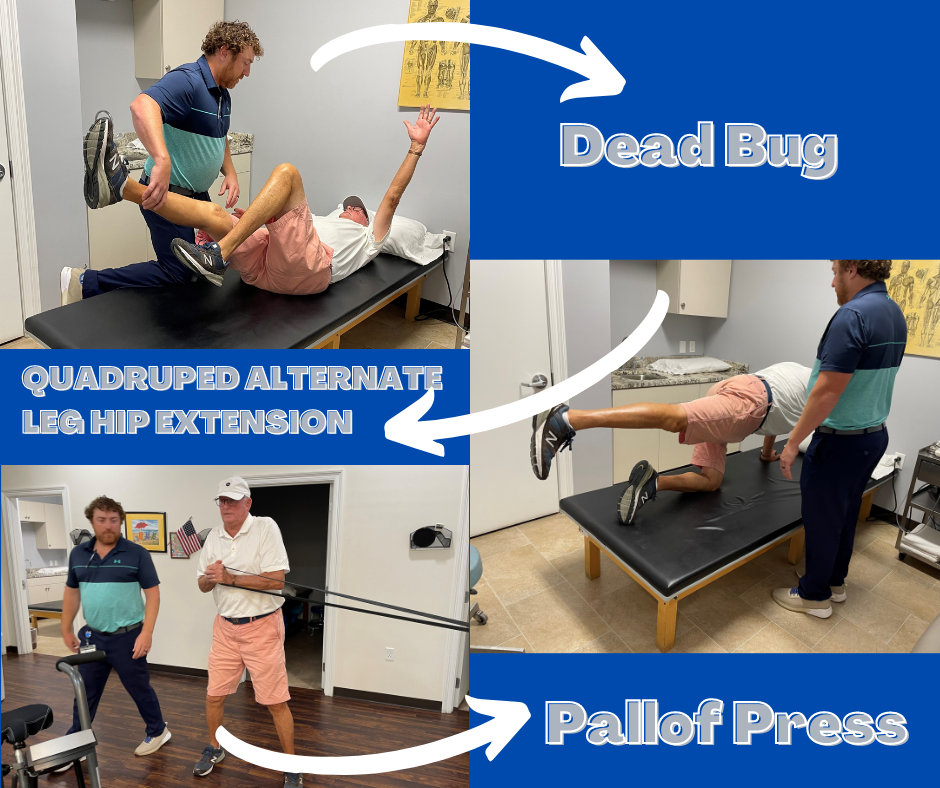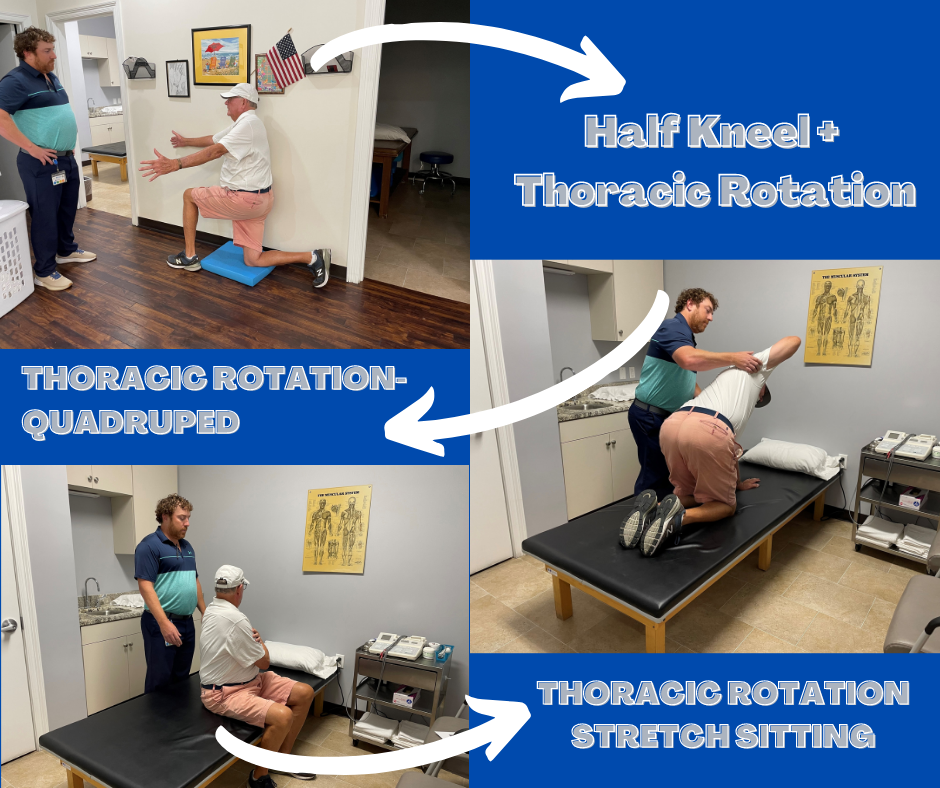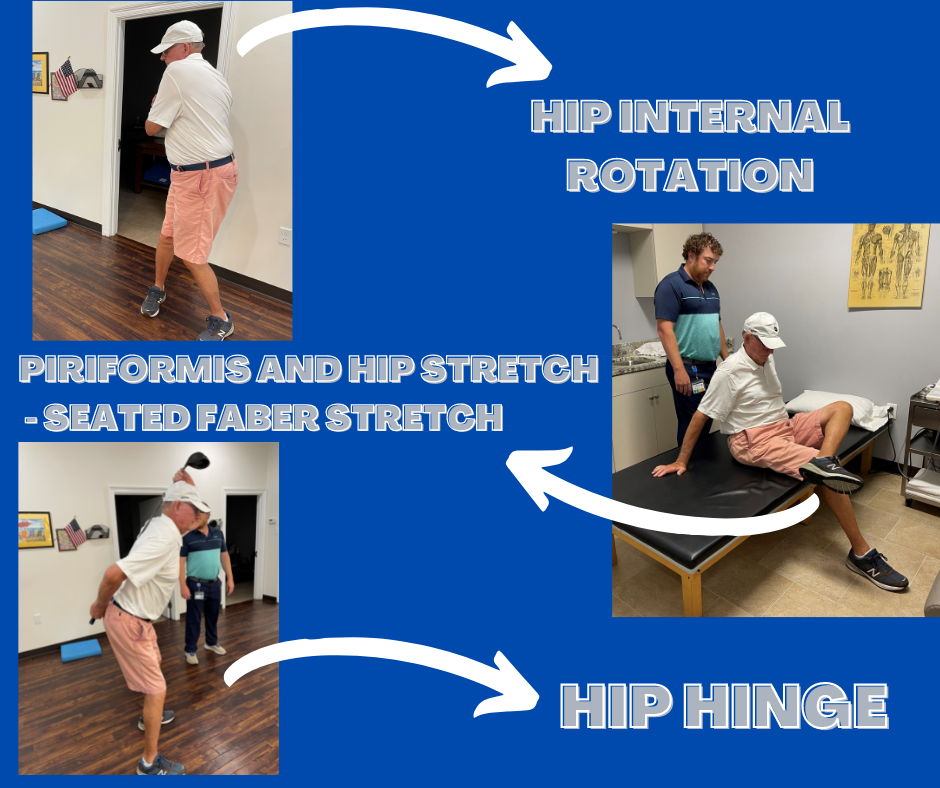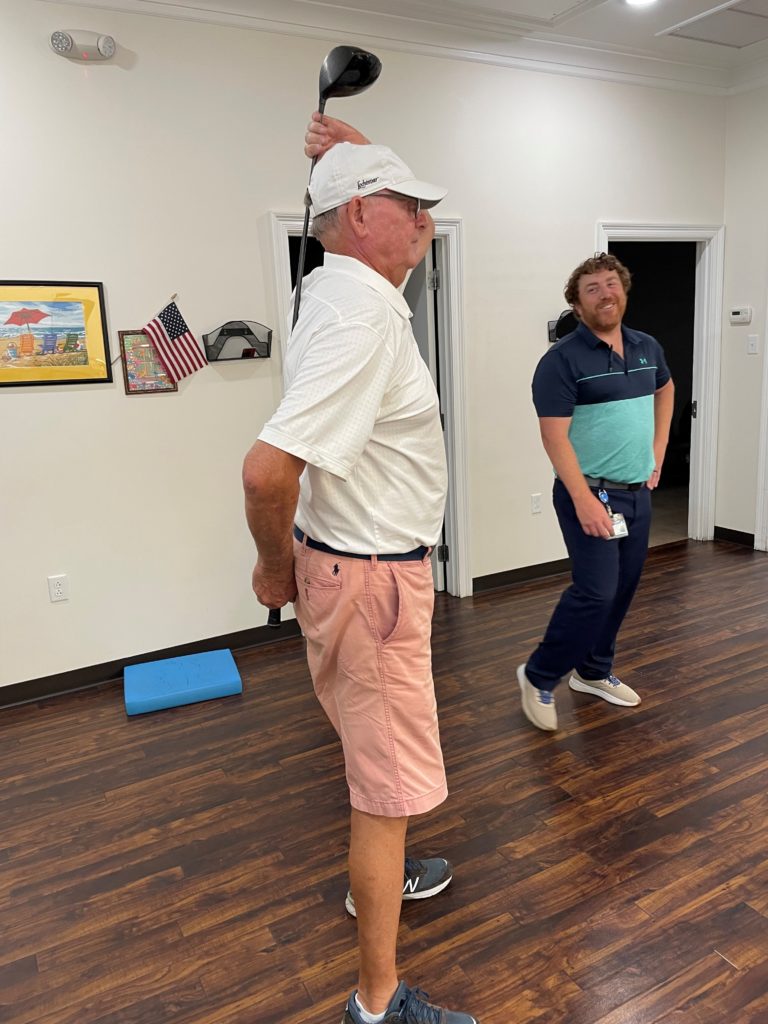It’s summertime and that means it’s time to unpack the golf clubs and hit the course. But what if you’re having immense amount of lower back pain? It could easily affect your ability to play. Peyton, our physical therapy assistant at Therapy Center’s Carencro location, has tips and exercises that can help improve your game.
“There are three main areas I would focus on to help someone with their lower back pain and specifically help them with their golf swing. The key is stability then mobility in upper and lower spine,” says Peyton.
1. Address Core Stability
Core stabilization exercises enhance the ability of the segmental muscles. This results in improved function and decreased pain in lower back. Suggested exercises include:
DEAD BUG – While lying on your back with your knees and hips bent to 90 degrees, use your stomach muscles and maintain pelvic neutral position. Do not allow your spine to move. Hold pelvic neutral and then slowly straighten out a leg without touching the floor. at the same time raise an opposite arm over head. Do not allow your spine to arch during this movement. Return to starting position and then repeat on the opposite side.
QUADRUPED ALTERNATE LEG – HIP EXTENSION – While in a crawling position, slowly draw your leg back behind you as you straighten your knee.
PALLOF PRESS – Hold an elastic band, cord or pulley against your chest with it attached to the side. Slightly bend your knees and hips, adopting an athletic stance. Next, slowly extend your arms forward and then back. Do not allow your body to rotate the entire time.

2. Address Thoracic Mobility
Improving range of motion in thoracic spine can decrease demand on lumbar spine. Exercises to try include:
HALF KNEEL + THORACIC ROTATION – Come into a half kneeling position near a wall with your hip furthest to the wall flexed. Rotate your upper body away from the wall. The ultimate goal is for your hand to come close to the wall, do what your body is allowing.
THORACIC ROTATION – QUADRUPED – While in a crawl position, lower your buttock a little towards your feet to get in a lower position as shown. Next, with a hand behind your head, rotate your body and your head to the side, then return.
THORACIC ROTATION STRETCH SITTING – Sit in good posture. Cross your arms and rotate to one side until you feel a stretch as shown in the picture. Repeat to other side.

3. Address Hip Mobility
Extending hip flexor length, stretching the hip flexors, will help release tension off of lower back.
HIP INTERNAL ROTATION – Place both feet into internal rotation (pigeon toe) and twist your hips and torso side to side 30 times.
PIRIFORMIS AND HIP STRETCH – SEATED FABER STRETCH – While sitting, cross your affected leg on top of the other as shown. Next, gently lean forward until a stretch is felt along the crossed leg.
HIP HINGE – Stand and hold a dowel (or golf club) along your back with one hand on your lower back/tail bone and the other hand behind your head/neck. Bent knees slightly, then lean forward and then lean back to starting position. Repeat. Maintain contact of the dowel and your hands to your low back/tail bone, your upper back and your head/neck the entire time.

Watch To See These Stretches In Action
For more information about our clinic locations and how we can help improve your quality of life, please visit our website www.therapyctr.com.

